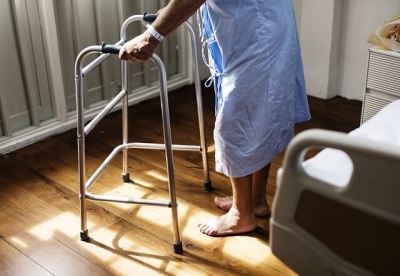 Approximately 1.7 million people in the U.S. are living with the amputation of a limb. Every year, another 156,000 experience an amputation. Nearly one-fourth of all these are due to trauma. The rest are due to vascular disease, diabetes and cancer. Only 4 percent are due to congenital reasons.
Approximately 1.7 million people in the U.S. are living with the amputation of a limb. Every year, another 156,000 experience an amputation. Nearly one-fourth of all these are due to trauma. The rest are due to vascular disease, diabetes and cancer. Only 4 percent are due to congenital reasons.
No matter why a person has to have a limb amputated, there is an adjustment period. Not only are there physical challenges to coping with the loss of a limb, but emotional scars can also run deep. Fortunately, there seems to be a number of resources for helping folks live with an amputation.
Physical Adjustment: Prosthetics
If you know you will be having an amputation, you may want to meet with a prosthetist prior to the amputation to discuss using a prosthetic following surgery. Although your surgeon will be the one to determine what your prosthetic needs are, a preoperative consultation with the person who will make and fit your prosthesis may ease your mind. Some prosthetics are fitted in the operating room in place of a dressing, so the pre-amputation consultation is required.
Research shows those who immediately begin using a prosthesis recover more quickly from their amputation than those who begin using one at a later time.
Emotional Adjustment
The emotional adjustment of living with an amputation has been likened to a roller coaster ride. You will initially feel like you have no control over your life and are dependent on others. You will have highs and lows. Emotions range from hope to despair. You may find it difficult to use your normal coping skills. You feel all your emotions intensely and resuming any regular activity is stressful. Some coping suggestions include:
- Resume decision-making for your life as soon as possible so you are back in control.
- Do all you feel capable of doing. Let others know how they can help, but you take charge of directing them.
- Talk to people about how you are feeling. A counselor may be helpful.
- Give up thinking, “if only.” You cannot change what happened to you.
- Know that it gets better with time.
- Join a support group.
Daily Living Aids
Adjusting to your new body and learning new ways to perform activities of daily living may be a challenge. You may feel unsteady on your feet even if your arm was amputated, although the specific challenges depend on which limb you lost and at what level the amputation was made. You may find difficulty in eating, brushing your teeth or putting on your socks if you lost your dominant hand.
Occupational and physical therapists will help you learn how to become more mobile, whether it is learning to walk again with your prosthesis or how to manage in the kitchen if you lost an arm.
And, yes. You likely will be able to drive again. There are a multitude of adaptive devices that can be used no matter which limb was amputated. It will take adjustment, education and practice, but you should be able to do it.
Phantom Pain
Many people with amputations report phantom pain, which is a feeling of pain or itching in the missing limb. If this is happening to you, you are not crazy. It is a very real pain and an itch that you cannot scratch. Researchers do not know exactly why this happens, but it is likely caused by a “rewiring” of the nerves in your spinal column and brain. When a part of your body is stimulated, it gets transposed as a feeling in the “phantom” limb; the limb that is no longer part of our body.
It may also be caused by nerve damage that occurred during the amputation process. Build-up of scar tissue may also contribute to phantom pain.
For some people, the irritation is minor and quickly goes away. For others, it is long-lasting and severe. Be sure to report phantom pain to your doctor so you can be promptly treated. Some treatments that have been found to help include:
- Medications that are used to relieve nerve pain, depression or epilepsy.
- Pain medications in general, including opioids.
- Acupuncture.
- Mirror box therapy. Both the missing limb and intact one are put in a box with a mirror in the center. All you see is the reflection of the remaining limb. This somehow tricks your brain into thinking you have two intact limbs and has been found to help with phantom pain.
- Practice meditation, mindfulness and relaxation techniques.
- Distract your mind with some intellectual activity such as solving puzzles or reading.
If you are adjusting to life as an amputee, you may have questions we can help with and there may be resources we can suggest. Unfortunately, there are times when you may have been discriminated against because of your disability. Contact one of our health care or disability rights attorneys at Davis Levin Livingston for more information.
